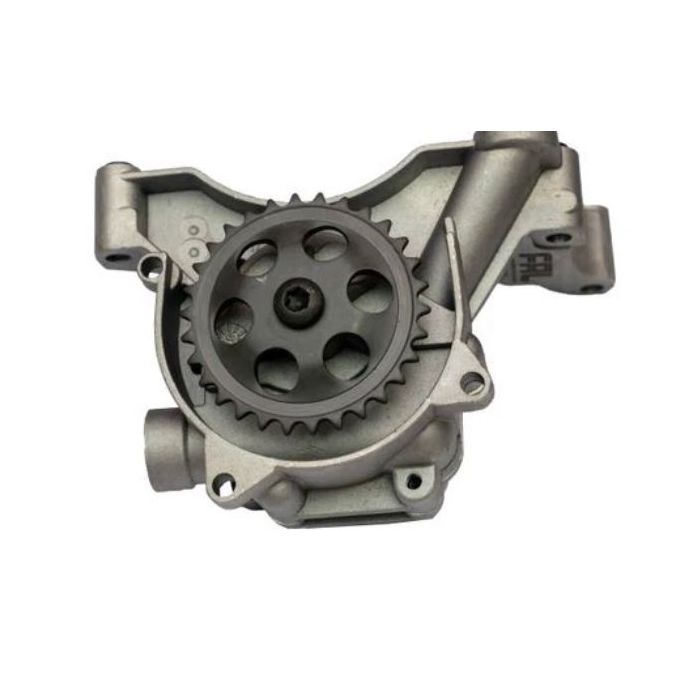Replace a state-of-the-art clp engine for better performance.
Replace a state-of-the-art clp engine for better performance.
Blog Article
How a Clp Engine Can Boost Efficiency in Different Industries
The development of CLP engines marks a significant change in operational performance across numerous markets, driven by their ability to enhance fuel usage and lessen downtime. Industries such as manufacturing and logistics stand to obtain significantly from their durable design and regular power output, which guarantee to streamline operations and enhance performance. As organizations progressively focus on sustainability together with effectiveness, the function of CLP engines comes to be much more essential. What stays to be seen is just how these advancements will form the future landscape of commercial operations and their effect on more comprehensive financial trends (clp engine).
Introduction of CLP Engines
CLP engines, or Constant Liquid Propellant engines, represent a significant advancement in propulsion innovation, especially for area applications. These engines utilize a continuous feed system that permits for the continual expulsion of propellant, causing enhanced efficiency and efficiency contrasted to standard solid or hybrid propulsion systems. By maintaining a consistent circulation of liquid propellant, CLP engines can attain extra exact thrust control, which is crucial for maneuvering spacecraft in various goal situations.
The design of CLP engines incorporates advanced products and ingenious fuel administration systems. clp engine. This causes lowered weight and boosted reliability, essential aspects for long-duration space goals. The continual operation decreases the risk of burning instability, an usual difficulty in standard rocket engines.

Benefits in Manufacturing
The manufacturing of Continuous Liquid Propellant (CLP) engines presents several notable benefits that boost both performance and cost-effectiveness. One of the key benefits is the structured production procedure, which reduces the intricacy related to typical propulsion systems. By utilizing liquid propellant, suppliers can attain better accuracy in engine efficiency, leading to optimized power result and minimized waste.
Furthermore, CLP engines help with a higher degree of modularity, enabling easier assimilation right into various production lines. This flexibility can substantially reduce lead times and improve overall functional versatility. Using CLP modern technology additionally has a tendency to minimize the demand for substantial maintenance due to fewer relocating parts, which converts into lowered downtime and functional costs.

Applications in Logistics
Leveraging Constant Fluid Propellant (CLP) engines in logistics supplies substantial benefits in functional performance and reliability. These engines supply a durable service for various transportation requirements, allowing the seamless motion of goods throughout substantial distances. The fundamental style of CLP engines enables for constant power outcome, which equates into smoother and much more predictable transportation schedules.
Among the vital applications of CLP engines in logistics remains in durable freight transport, where they can drive both ground and aerial lorries. Their capacity to preserve high efficiency under differing lots conditions guarantees that delivery timelines are fulfilled, therefore improving client view it complete satisfaction. Additionally, CLP engines can be incorporated into automated logistics systems, assisting in real-time tracking and enhancing path planning.
In addition, the durability of CLP engines lowers upkeep downtime, allowing logistics firms to maximize their functional abilities. This is particularly helpful in warehousing operations, where performance in managing and delivering goods is essential. As logistics remains to advance, the combination of CLP engines represents a forward-thinking technique that not only boosts performance yet also sustains the industry's expanding demands for integrity and rate.
Effect on Power Efficiency
Just How do Continuous Fluid Propellant (CLP) engines enhance energy performance in transportation? CLP engines use a consistent circulation of liquid gas, optimizing combustion procedures and maintaining a steady drive output. This design minimizes energy losses connected with traditional combustion engines, where gas distribution can vary and cause inefficiencies.
The continuous procedure of CLP engines enables a more effective thermal cycle, leading to higher particular impulse compared to standard engines. clp engine. This translates to lowered gas usage for the exact same amount of job done, significantly lowering operational expenses throughout numerous transport sectors, consisting of aviation and maritime markets
Additionally, the capacity of CLP engines to keep optimum efficiency under differing load conditions reduces the need for regular acceleration and deceleration, their website additionally improving gas performance. Boosted power effectiveness not just adds to set you back financial savings but likewise brings about decrease greenhouse gas exhausts, straightening with international sustainability objectives.
Future Trends and Innovations
Arising innovations in Continual Fluid Propellant (CLP) engine innovation assurance to revolutionize the landscape of transport effectiveness and sustainability. As industries pivot toward greener alternatives, CLP engines stand at the center, incorporating ingenious materials and design methodologies that improve performance while lessening environmental effect.
Among the most promising trends is the fostering of crossbreed systems that incorporate CLP engines with renewable resource sources. This harmony can enhance fuel intake and minimize emissions, aligning with international sustainability goals. Developments in computational liquid dynamics (CFD) are facilitating the layout of more aerodynamically reliable engines, leading to decreased drag and boosted fuel performance.
Moreover, the development of wise monitoring systems is this link readied to improve operational performances. These systems leverage information analytics and IoT technology to enhance engine performance in real-time, making sure that the engines run within their most effective criteria.
As research proceeds to check out different propellant formulas-- such as biofuels and artificial fuels-- the future of CLP engines looks appealing. By using these developments, markets can not just improve their effectiveness yet also add significantly to a cleaner, much more lasting future in transport.
Conclusion
In conclusion, CLP engines stand for a considerable advancement in effectiveness across numerous industries. The assimilation of advanced products and less moving components lessens maintenance needs, while alignment with sustainability objectives placements CLP engines as a pivotal modern technology for the future.
Report this page